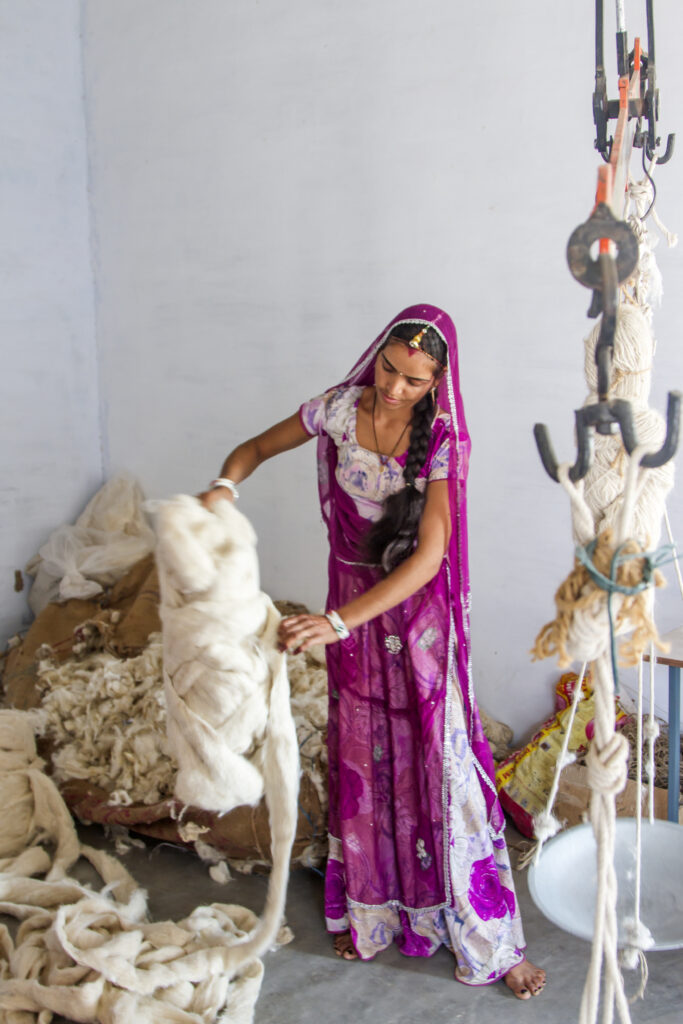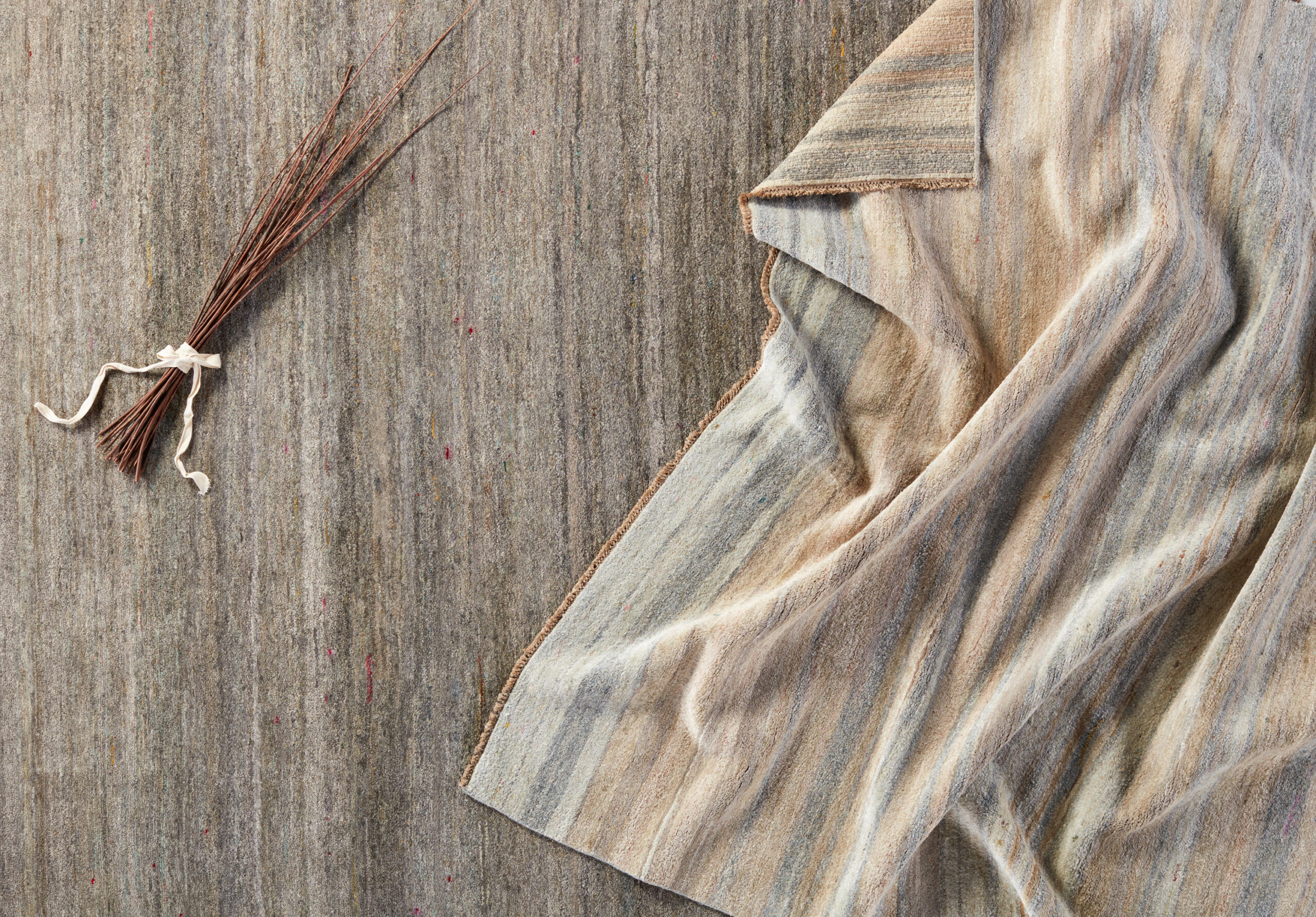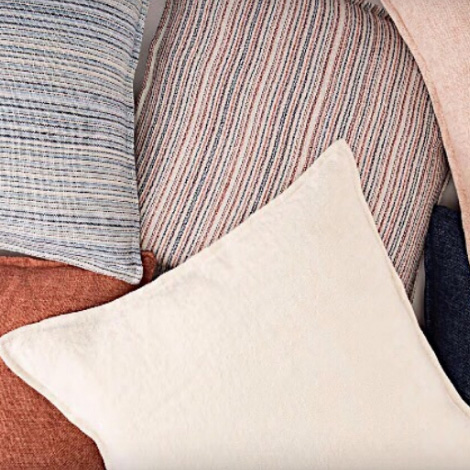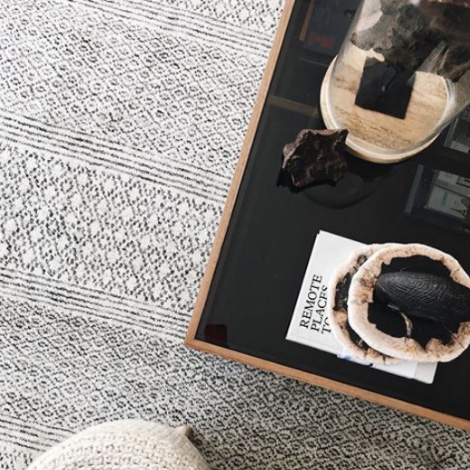Jaipur Living‘s in-house design and product development team tell the inspiring—and environmentally conscious—story behind its luxury, heirloom-quality rugs made from sari silk.

Jaipur Living‘s hand-knotted Embark collection is made form 100% sari silk.
What Is Sari Silk Yarn?
Sari silk is a recycled yarn made from leftover materials from sari production. A sari (also spelled saree) is a garment traditionally worn in the Indian subcontinent that is often made from cotton or silk.
“A sari is the thing to wear in India,” says Kavi Chaudhary, design director at Jaipur Rugs (Jaipur Living’s India-based counterpart). “It’s a huge industry. Over the years, the leftover scraps from sari production were respun into fresh yarn. It resulted in an exceptionally beautiful yarn that is unique in texture and color. Since it’s completely made from scraps, it is also eco-friendly,” she adds.
See also: Lifecycle Of An Artisan-Made Rug
“What normally would have been waste is reused as sari silk and transformed into a whole different look and function,” explains Lumi Hoeye, product development and design manager at Jaipur Living. “Sari comes in various colors and elaborate details from handwoven textiles. As they can be purely functional garments, they can also be sentimental pieces worn during special memories or events and often passed down from one generation to the next.”

Jaipur Living works with more than 40,000 artisans who handcraft its rugs.
Unique Color and Dimension
Sari silks are available in a variety of colors, giving this material a one-of-a-kind, tonal look that lends a sense of depth and dimension—particularly when it comes to sari silk rugs. “Patterns are common in saris, which is why you’ll often find a mix of colors in sari silk yarn,” Chaudhary says. “These properties of the yarn make a sari silk rug very special. Each batch of yarn has its own variation, so no two rugs will be the same. The abrash of sari silk rug is incredible.”
See also: Behind-The-Loom: Ethical Production
Although saris are traditionally bright in color, that doesn’t necessarily mean that sari silk rugs are exclusively available in punchy hues. “To get a higher variety of colors, sari silk can be bleached to remove the strong color tones, resulting in a more subtle range of color and dimension,” she says. “You can find sari silk rugs in bold patterns that use strong jewel colors as well as subtle color tonal rugs with a washed-out, vintage effect.”

Wirth Design Group placed the Tamil rug, which is made with wool and sari silk, at the center of this bedroom. Photo by Steven Bruno
Ultra-Soft Texture
Besides having a beautiful sense of depth and dimension, sari silk rugs are also incredibly soft. “Since the micron of the sari silk thread is quite fine compared to what is typically used in rug production, the overall effect is an extra-soft rug that is different from a normal silk rug,” explains Chaudhary.
“Sari silk rugs have a definite flavor to them. They can look effortless in rooms with a global or cultural feel—but they work equally beautifully in modern interiors, where they become the center of attention with their bold colors and patterns,” she adds.

Jaipur Living supports its artisan community through the Jaipur Rugs Foundation.
Meaningful Design
Not only are sari silk rugs stunning focal points, but they’re also celebrations of Indian culture. “Sari silk is rooted deeply in the Indian culture and represents the vibrant and rich traditions of the craftsmanship found in India,” says Hoeye. “To be able to have that in a part of your home makes it very special.”







